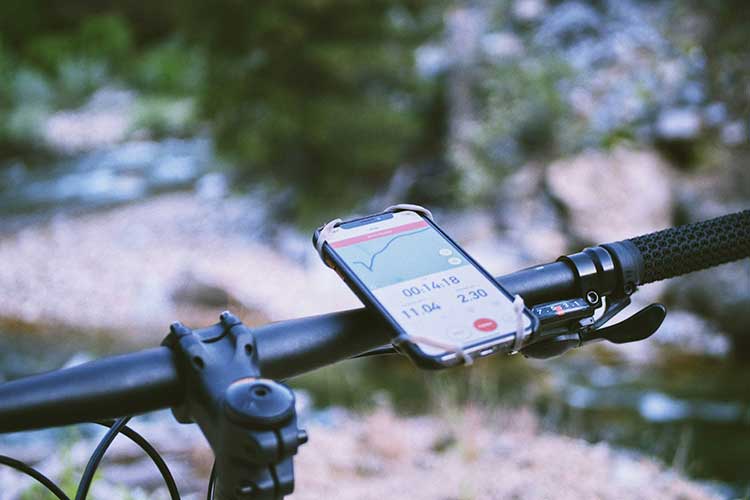Cycling, a sport and mode of transportation revered for its simplicity and environmental friendliness, is undergoing a revolutionary transformation. The advent of technology in cycling is not just redefining the way we perceive this age-old activity; it’s propelling it into a future where efficiency, safety, and enjoyment are significantly enhanced. This three-part series delves into the myriad ways technology is influencing cycling, from electric bikes (e-bikes) and smart gear to the role of mobile technology and sustainability initiatives.
Electrification of Bikes: A Leap Towards Sustainable Mobility
The rise of e-bikes marks a significant milestone in the evolution of cycling. These sophisticated machines blend the traditional pedal power with electric motors, offering a hybrid experience that broadens the appeal of cycling. Unlike conventional bikes, e-bikes facilitate higher speeds and reduce the exertion required, making cycling accessible and appealing to a wider audience
For urban commuters, e-bikes represent an efficient, eco-friendly alternative to motor vehicles. The integration of pedal-assist technology enhances commuting efficiency, allowing cyclists to navigate through city traffic with ease, without the inconvenience of sweat or fatigue. This shift towards e-bikes is not just about convenience; it’s a significant stride towards reducing urban congestion and carbon emissions, aligning with global sustainability goals.
The Emergence of Smart Cycling Gear
Safety and performance in cycling are receiving a tech-savvy makeover through the introduction of smart gear. Innovations such as smart helmets, equipped with built-in navigation, and cycling jackets with LED signaling, are setting new standards in rider safety
These advancements are not mere luxuries; they’re becoming necessities in a world where cycling is increasingly integrated with fast-paced urban environments.
Smart helmets, for instance, do more than protect the head; they serve as a hub for navigation and communication. Integrated GPS systems guide cyclists through the most efficient routes, while built-in communication systems keep them connected with fellow riders or emergency services without disrupting their journey. Moreover, the incorporation of safety sensors capable of detecting potential accidents adds an invaluable layer of security, offering peace of mind for riders and their loved ones
The Role of Mobile Technology and Apps
The synergy between cycling and mobile technology has given rise to a plethora of apps designed to enhance the cycling experience. These apps offer a wide range of functionalities, from performance tracking and route planning to virtual competitions and social connectivity with fellow cyclists. The impact of these apps extends beyond individual riders, fostering a sense of community and shared enthusiasm for cycling
Sustainable Cycling Initiatives
As cycling transitions into the digital age, sustainability remains at its core. The cycling industry is embracing eco-friendly initiatives, from the use of recycled materials in bike production to the development of sustainable infrastructure. These efforts are crucial in promoting cycling not just as a leisure activity or a means of transport, but as a cornerstone of sustainable living
Advancements in Bike Design
The evolution of bike design stands as a testament to the integration of technology in cycling. Materials such as carbon fiber are now commonplace in the construction of bike frames, offering a blend of strength and lightness that was previously unattainable. These materials not only reduce the overall weight of the bike, making them easier to handle and faster to ride, but also contribute to the longevity and durability of these machines
Aerodynamic design is another frontier where technology has made a significant impact. By minimizing air resistance, these designs enable cyclists to achieve greater speeds with less effort, enhancing the efficiency of every pedal stroke. Moreover, the customization of bike components for a personal fit ensures that every rider can achieve their optimal riding posture, thereby improving performance and reducing the risk of injury
GPS and Navigation Innovations
Gone are the days when cyclists relied solely on paper maps or memory for navigation. Today, GPS technology has become an integral part of cycling, offering robust navigation features that cater to both urban commuters and off-road adventurers. From handheld GPS devices designed for rugged terrains to smartphone apps that provide convenient, multipurpose navigation, cyclists now have access to real-time data and route planning at their fingertips
Integrated bike systems represent the pinnacle of this technology, seamlessly incorporating GPS functionality into the bike itself. These systems not only offer navigation but can also track performance metrics, making them an invaluable tool for both casual riders and professional athletes alike
The Impact of Cycling Apps
Cycling apps similar to online casino games have fundamentally changed how people spend their time. Real-time performance tracking allows riders to monitor their speed, distance, and elevation in real-time, providing instant feedback on their efforts. Virtual competitions, meanwhile, offer a new dimension to training, allowing cyclists to compete against others from around the globe without leaving their local route
Social connectivity is perhaps one of the most significant benefits of cycling apps. By connecting cyclists with a global community, these apps foster a sense of camaraderie and shared passion that transcends geographical boundaries. Whether it’s sharing routes, participating in challenges, or simply cheering each other on, the social aspect of cycling has never been more vibrant
Augmented Reality (AR) in Cycling
One of the most exciting frontiers in cycling technology is the integration of augmented reality. AR can enhance the cycling experience by overlaying data and virtual images onto the real world. Imagine cycling glasses that not only protect your eyes but also display your current speed, heart rate, and navigation directions directly in your line of sight
This technology can also bring new dimensions to training, allowing cyclists to race against virtual competitors or explore virtual terrains, all while riding on their local roads or trails.
Sustainable Innovations
Sustainability continues to be a key focus in cycling technology, with manufacturers exploring more eco-friendly materials and production methods. The development of bikes made from recyclable materials or those that have a lower environmental impact is gaining traction. Furthermore, the cycling industry is increasingly considering the full lifecycle of cycling products, from manufacturing and usage to disposal, aiming to minimize the carbon footprint of each phase
Data Analytics and Personalized Performance
The future of cycling also lies in the personalization of performance through data analytics. With the vast amounts of data collected by cycling computers, smart watches, and mobile apps, cyclists can gain deep insights into their performance, health, and training progress. Advanced algorithms and machine learning can analyze this data to provide customized training programs, predict performance outcomes, and even suggest optimal nutrition and recovery strategies
E-Bikes and Urban Mobility
The role of e-bikes in urban mobility is set to expand significantly. As cities continue to grapple with traffic congestion and pollution, e-bikes offer a practical solution that is both eco-friendly and efficient. With improvements in battery technology, e-bikes will become lighter, have longer ranges, and require shorter charging times, making them even more attractive for commuters and urban cyclists
Conclusion
The integration of technology into cycling is transforming it into a more efficient, safe, and enjoyable activity. From the electrification of bikes and the emergence of smart gear to the use of augmented reality and the focus on sustainability, technology is making cycling more accessible and appealing to a broader audience. As we look to the future, it is clear that these innovations will continue to shape the cycling landscape, making it an even more integral part of our lives.
The journey through the technological revolution in cycling is an ongoing one, with each advancement opening new possibilities and enhancing the cycling experience in ways we can only begin to imagine. As cyclists, embracing these changes can lead to improved performance, greater enjoyment, and a deeper connection to the cycling community and the world around us.
Photo by Jay Miller on Unsplash
No products found.
















